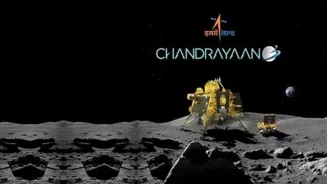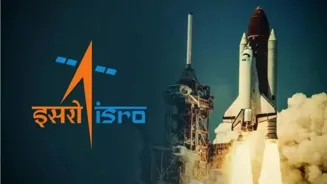615 crore to the Moon—how India proved brilliance doesn’t need billions.
On August 2023, when Chandrayaan-3 made its historic landing near the Moon’s South
Pole, India became the first country to achieve this feat. But the triumph wasn’t just about scientific excellence or national pride—it was also about cost efficiency. At a project cost of just ₹615 crore, the mission stunned the world. To put it in perspective, Hollywood movies like Interstellar and The Martian had bigger budgets than India’s entire Moon mission!
For a nation that balances ambition with affordability, Chandrayaan-3’s success reinforced the fact that smart engineering and frugal innovation can make space exploration not just possible but revolutionary.
Budget Brilliance: How ISRO Achieved the Impossible
The secret behind ISRO’s budget brilliance lies in a blend of indigenous technology, clever planning, and an ethos of simplicity. Unlike Western agencies that often rely on expensive outsourced components, ISRO maximized homegrown solutions. Every aspect—from launch vehicle design to orbital maneuvers—was optimized for efficiency.

Instead of building multiple prototypes, ISRO relied heavily on computer simulations and ground testing to cut costs without compromising safety. Reusing designs from previous missions like Chandrayaan-2 also meant fewer expenses. This culture of frugal innovation has made ISRO a global role model, showing that cutting-edge exploration doesn’t have to come with billion-dollar price tags.
How Chandrayaan-3 Redefined Space Economics
Space has always been considered the playground of superpowers with deep pockets. The developed nations spend billions annually on their space programs, while smaller nations often shy away from the astronomical costs. But Chandrayaan-3 flipped this narrative.
With its 615 crore price tag, India showed the world that big dreams can thrive on small budgets. The mission sparked global interest, with many developing nations now exploring partnerships with ISRO. For India, this was more than just a lunar touchdown—it was an economic statement that space exploration can be democratized.

Why the Cost Still Matters Two Years Later
Two years on, the financial brilliance of Chandrayaan-3 continues to inspire conversations. In a world where space budgets often spiral out of control, India’s ability to deliver results within limited resources is a masterclass in financial discipline.
The 615 crore tag still resonates because it highlights the balance between ambition and pragmatism—a philosophy deeply rooted in India’s approach to science and governance. It’s not just about reaching the Moon; it’s about proving that innovation can thrive even when resources are finite.
Beyond the Numbers: The Human Spirit
Behind the numbers lies the human story of thousands of engineers, scientists, and visionaries who worked tirelessly to make the mission a success. Their ability to stretch resources without stretching dreams embodies the Indian spirit. Chandrayaan-3 wasn’t just a triumph of cost-saving—it was a reminder that passion, perseverance, and precision matter more than money.
The Global Spotlight on India’s Space Efficiency
The world took note. Media headlines marveled at how India could pull off such a feat for less than the cost of a blockbuster film. Space agencies and investors alike began reevaluating their models, realizing that India’s “less is more” philosophy could reshape the future of space economics.
This global recognition has elevated India’s standing as not just a participant but a pioneer in affordable space exploration.

Looking Ahead: Bigger Dreams, Balanced Budgets
As Chandrayaan-3 turns two, its legacy is far from over. ISRO is already working on future missions like Gaganyaan (India’s first human spaceflight) and launched Aditya-L1 (solar observatory mission), carrying forward the same principles of cost-efficiency. The real success of Chandrayaan-3 lies not just in its landing but in how it has set the tone for India’s space journey ahead: ambitious, accessible, and affordable.
Chandrayaan-3 will always be remembered as a landmark achievement, but what truly makes it iconic is its cost-effectiveness. In an era where billions are often the entry ticket to the cosmos, India proved that brilliance doesn’t need to come with a big bill.
As the mission celebrates its second anniversary, it continues to inspire—reminding us that the sky is not the limit, especially when innovation walks hand in hand with frugality.












